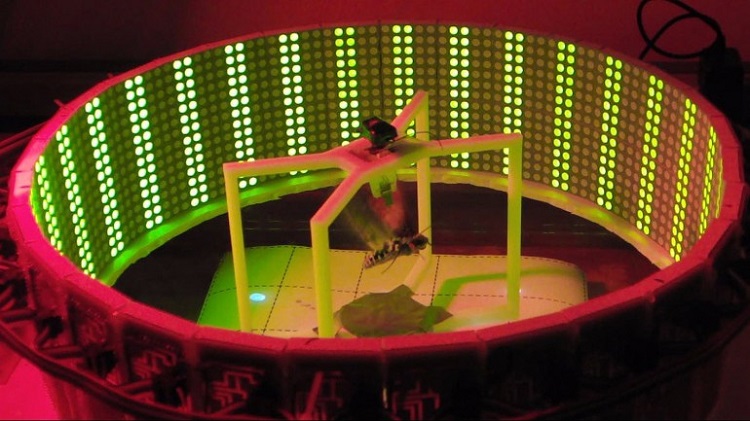Researchers develop remote-controlled moth cyborgs
Why settle for a remote-controlled cockaroaches when moths can fly?

Disaster relief and espionage are two of the most commonly cited motives behind cutting-edge robotics research. We’ve heard it all before, many,many times. One team from the North Carolina State University decided to do things differently; rather than build these robots from scratch, they decided to cybernetically enhance the miniature flying drones already available in our backyard: insects.
Their research, published in the online Journal of Visualized Experiments (JoVE), reveals how to monitor the electrical signals moths use to control their flight muscles and how to manipulate these muscles at will. The goal of the research is to create organic “biobots” that can be remotely controlled using implanted electronics and enhanced with sensors to aid in post-disaster reconnaissance.
This concept isn’t new in of itself, having been initially proposed in 2006 DARPA program called Hybrid Insect Micro-Electro-Mechanical Systems (HI-MEMS). However, N.C. State’s contribution to the matter is a new method of attaching electrodes to the moth while still in its pupal stage, when the caterpillar is undergoing metamorphosis inside its cocoon.
“In the big picture, we want to know whether we can control the movement of moths for use in applications such as search and rescue operations,” says Dr. Alper Bozkurt, an assistant professor of electrical and computer engineering at NC State and co-author of a paper on the work. “The idea would be to attach sensors to moths in order to create a flexible, aerial sensor network that can identify survivors or public health hazards in the wake of a disaster.”
Using the electrodes in conjunction with the wireless platform pictured above allowed the scientists to precisely match the electromyographic signal to the specific flight maneuver. The moth-cyborg is attached in the center of the platform – which is suspended in mid-air by a series of electromagnets – to give it the freedom to turn right and left.
“By watching how the moth uses its wings to steer while in flight, and matching those movements with their corresponding electromyographic signals, we’re getting a much better understanding of how moths maneuver through the air,” Bozkurt says.
Bozkurt admits there’s a grievous amount of work left to be done before the moths can be fully controlled, yet his team’s research will perfect parameters needed to eventually control the insects. “We’re optimistic that this information will help us develop technologies to remotely control the movements of moths in flight,” Bozkurt says. “That’s essential to the overarching goal of creating biobots that can be part of a cyberphysical sensor network.”
Via NCSU
Learn more about Electronic Products Magazine
Copyright © by Hearst Business Communications, Inc. All Rights Reserved.
http://www.electronicproducts.com/Computer_Systems/Standalone_Mobile/Researchers_develop_remote_controlled_moth_cyborgs.aspx